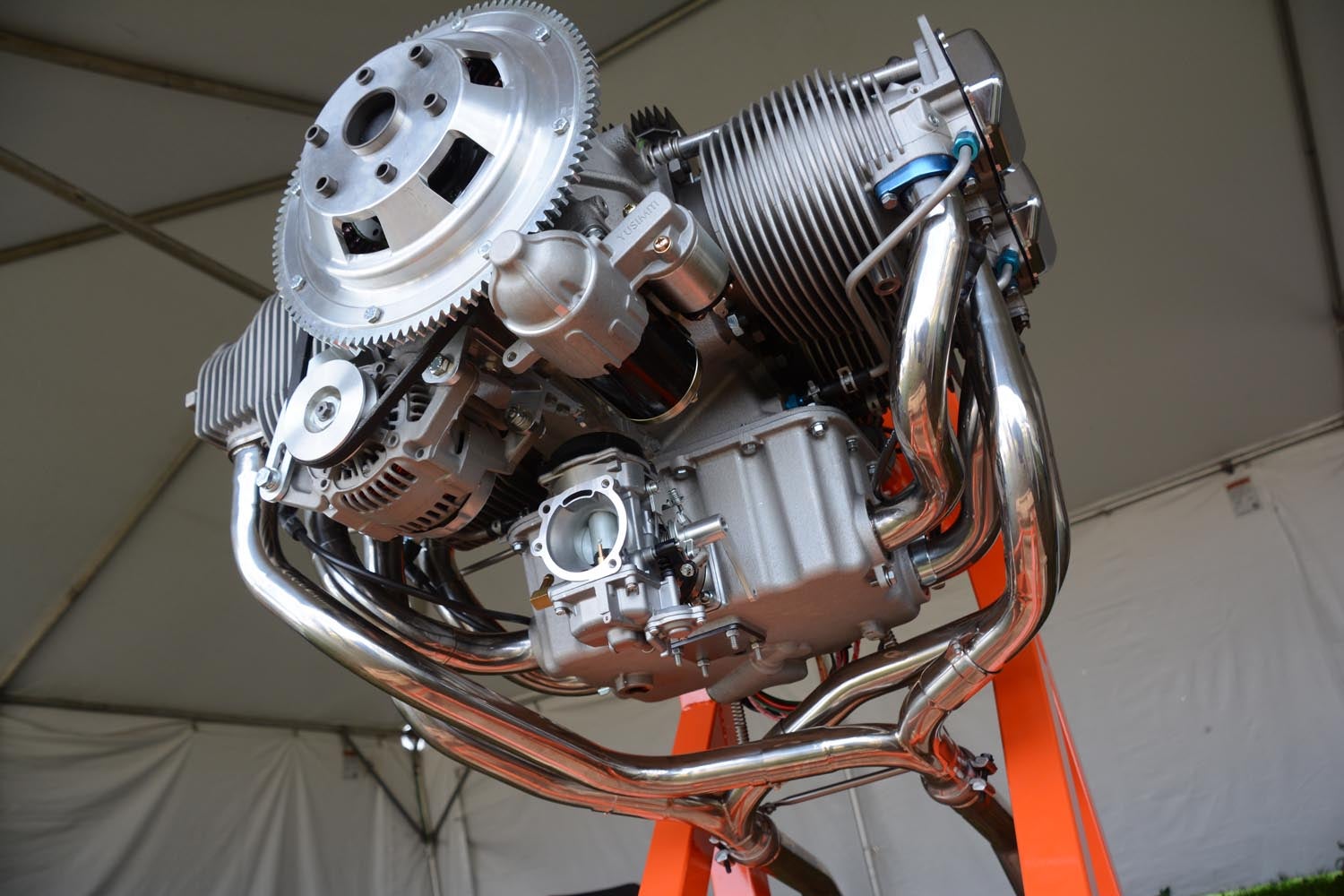
Tucked away in the sea of tent booths just off Boeing Plaza at AirVenture was a real surprise: a new engine from Taiwanese company Yusimiti.
The horizontally-opposed air-cooled 4-cylinder resembles a Continental O-200 in the power section and a tuned runner intake Lycoming in the sump/intake. Resemble it might, but the Yusimiti is hardly an exact copy. Most notably are patented single-piece cylinders. That is, the cylinder head and cylinder proper are a single aluminum casting with an integral iron sleeve.
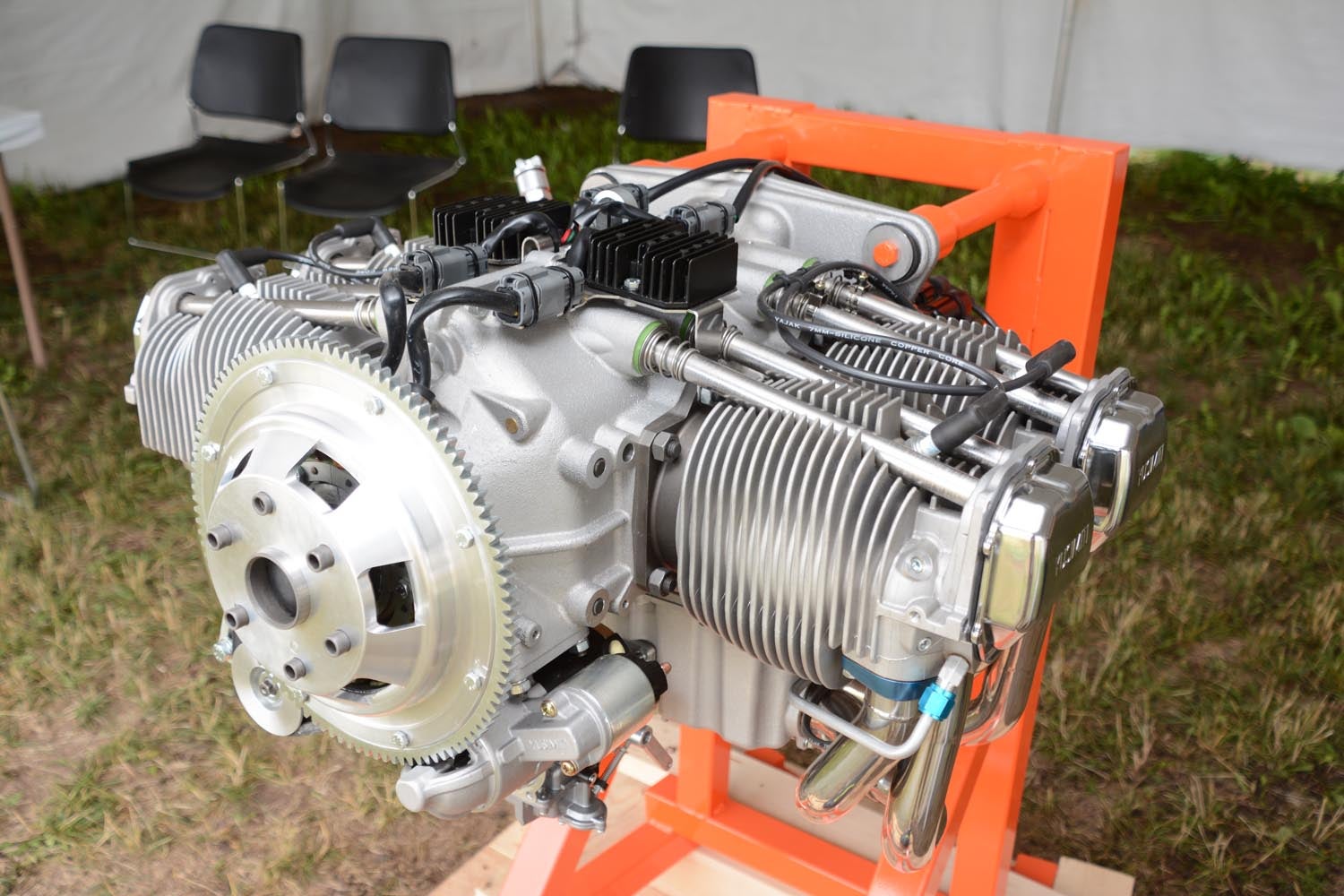
Most of the new engine’s specifications are standard fare. It’s a 4-stroke, 4-banger with direct drive and hydraulic lifters. It displaces 3.3 liters (212 cubic inches), is rated at 110 hp at 2800 rpm and runs on 95/98 octane mogas or 100LL. Installed weight is listed at 75 kg or 165 lb (with oil).
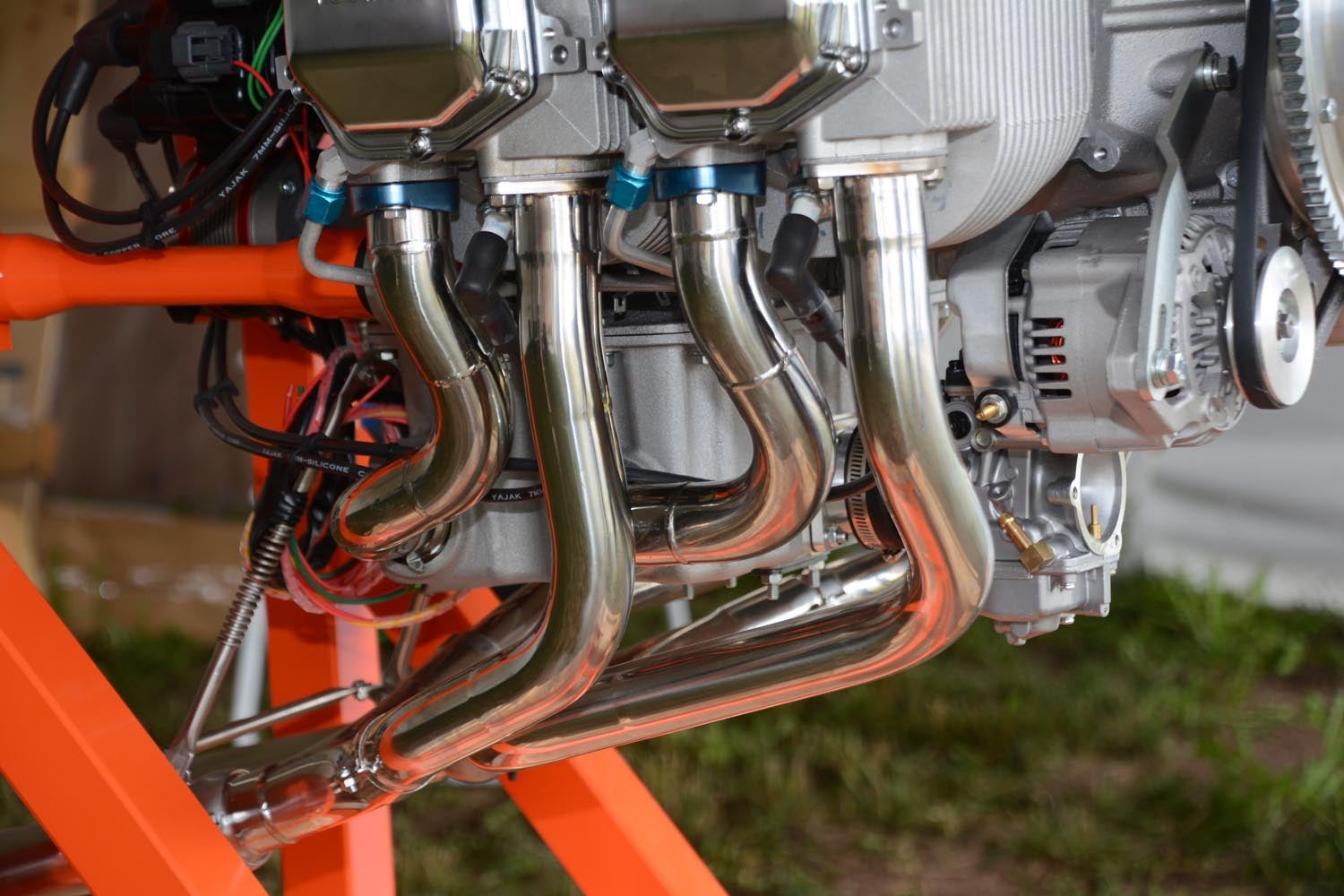
The single engine shown was wearing a carburetor but fuel injection is said to be an option. Yusimiti has an electrical component history and has fitted their engine with dual electronic ignitions.
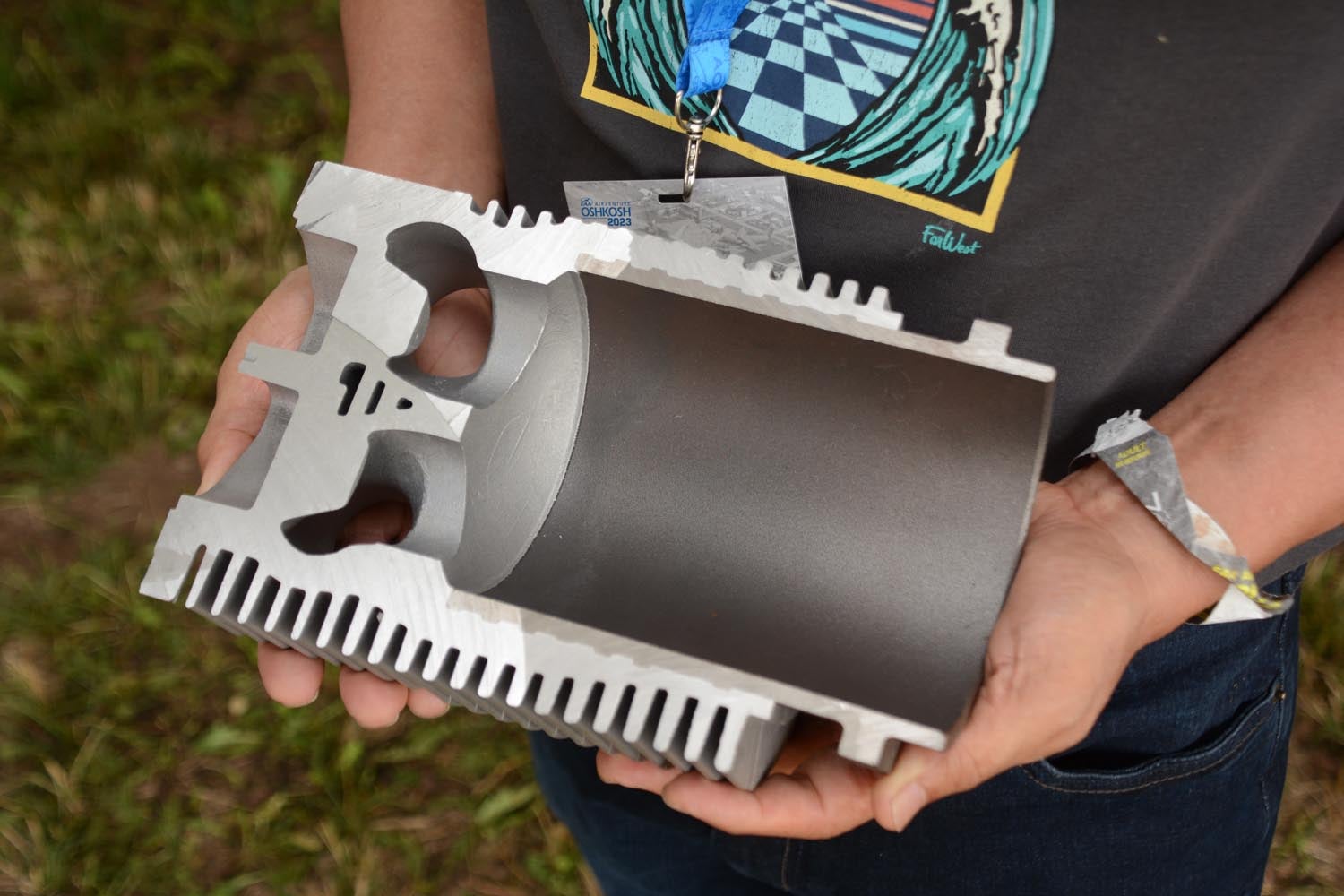
The engine is supplied complete with carburetor, alternator, ignition, oil filter, mechanical diaphragm fuel pump and vacuum pump. List price is a competitive $25,000. There is no certification so the engine is for experimental applications only.
Castings are made in-house at Yusimiti with machining farmed out.
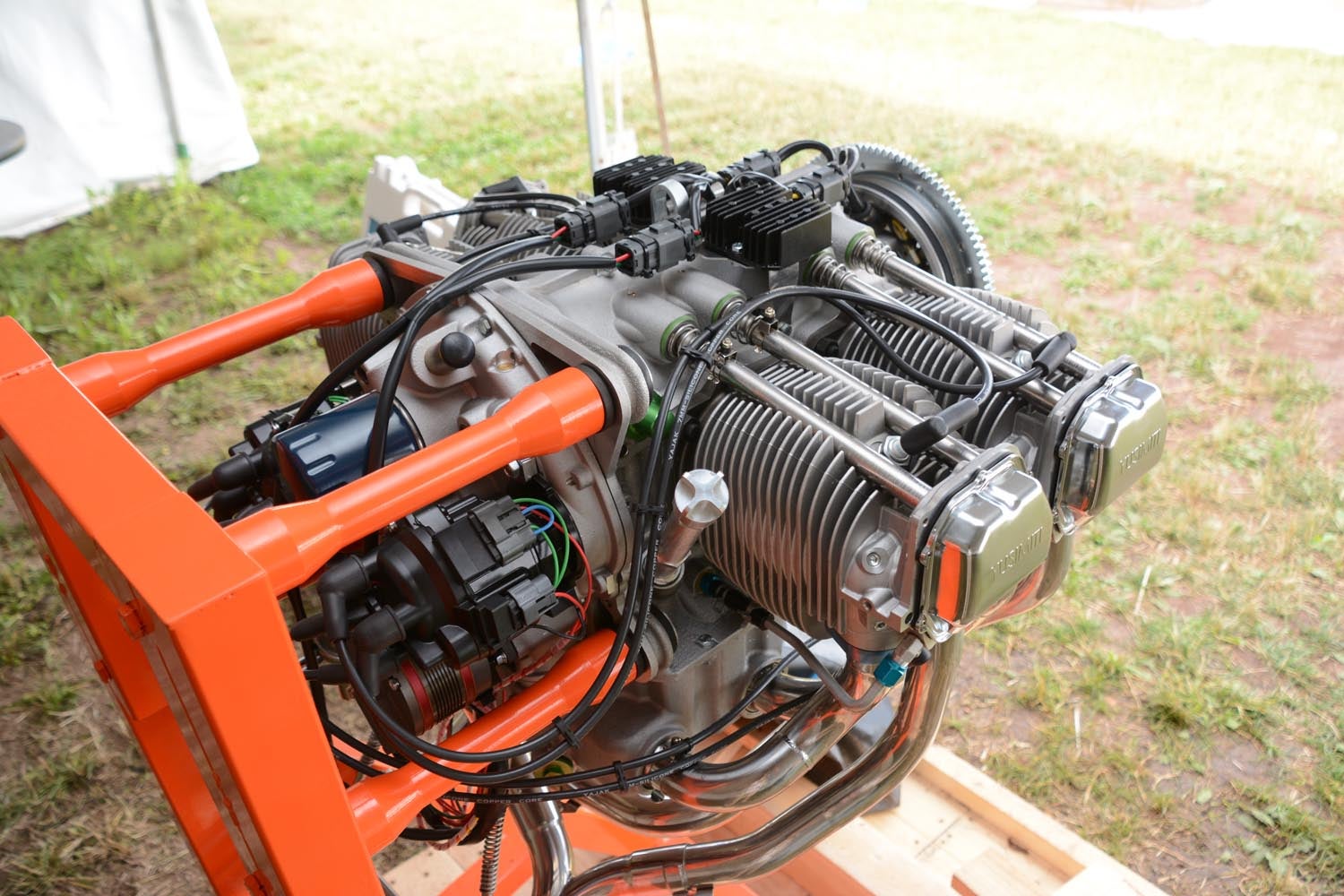
Yusimiti says a 3 year warranty is in the works and they are looking to sign their first US dealer. They are taking orders now at www.yusimiti.com.tw.








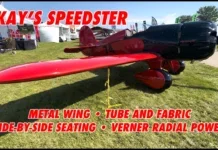





Just to bad we can’t build that in America
You could, it would just cost ten grand more.
THAT is of interest to this Rotax flier, like it as I do. IF the weight is real, seems on the light side for what I’m seeing.
Hi Tom,
Great catch! Thanks for the article. Do you see enough advantages over current Lycomings and Continentals for this to compete? There are potentially some beneficial attributes, and the price as new is competitive, but…
-Jeff
We did build that in America, 75 years ago. It’s displacement and output are nearly identical to a Continental O-200. Very expensive verses other 110 horsepower engines.
95/98 octane is almost certainly RON ratings. Equivalent to our 91/93 AKI.
Depending on model, the 0-200 weighs about 216 pounds and puts out 100 hp. If the claims for this engine are accurate, this one produces 10% more power with a 25% (54-pound) weight reduction. If true, that’s a huge improvement over the 0-200. Unless TBO is far less.
I wonder what the power improvement would be with fuel injection, if it would be multi-port or throttle body?
At 165 lbs it seems there would be the possibility for a turbo (for altitude compensation) while staying within the O-200’s weights. Possibly under the 200 lb limit of the Sonex.
The single casting of the cylinder and head seems a good move for reliability and cooling, and the iron sleeve would seem to make overhauling/boring possible although I’m not sure about it complicating grinding of the valves seats.
It all seems pretty interesting.
I would imagine that grinding a valve seat would not be a problem. Any place a valve would, a valve grinder would go. I am not so sure that the Crosely stamped and oven brazed WW II engine would not be a bad idea. A crankcase with a bank of cylinders bolted to each side.
Edit: 51 pounds.
For just a few more bucks, I’m completely firewall forward with 150hp, a quality prop AND installation going with a Viking Aircraft Engine. Honda reliability and I’m not taking a chance on a new Taiwanese product based on old technology practices….
I was told TBO was 2000hrs. Spent some time talking to them about this engine.
Not like an 0-200 at all. More like a Lyc. 0-233. Cam on top, bottom sump intake=Lyc.
Reminds me of:
http://www.epi-eng.com/aircraft_engine_products/aircooled_4-cyl_aircraft_engine.htm
Status unknown. Rumor was Vashon Aircraft was behind the project.
I was told by a very reliable source that Continental bought up the rights to the Vashon/EPIO-200 clone and therefore, it will not see the market.
This engine really does not bring anything new. No FADEC, no fuel injection. It is same old tech.
In the experimental category it’s about the same weight as the 2180cc VW but puts out 30+ more hp. There’s definitely a market for competition with the Rotax 4cyl 4 stroke engines.